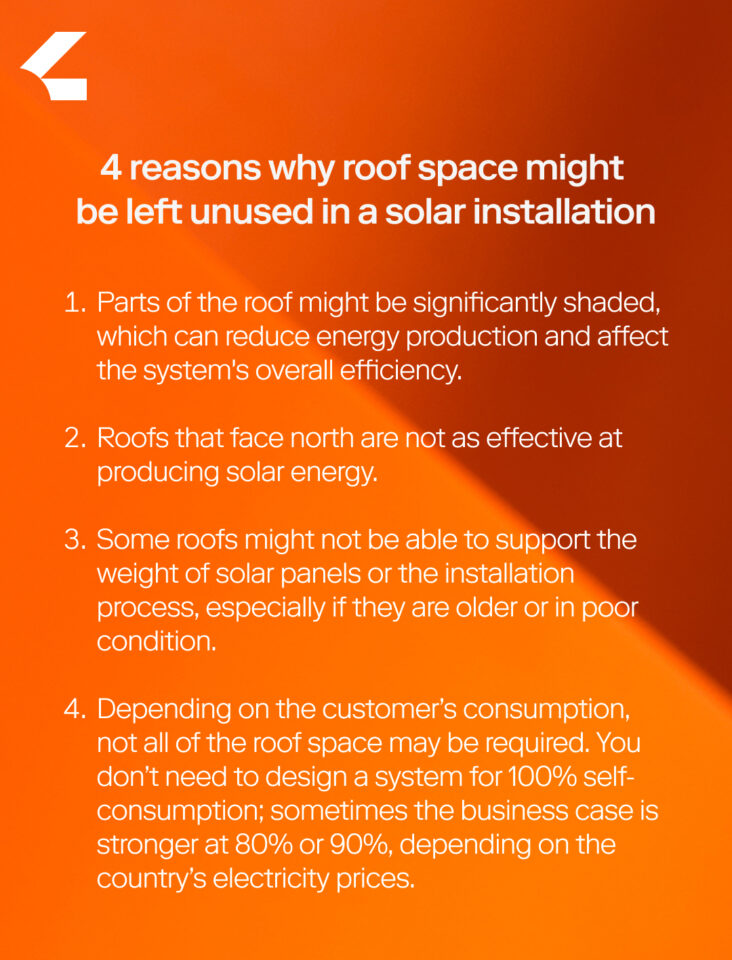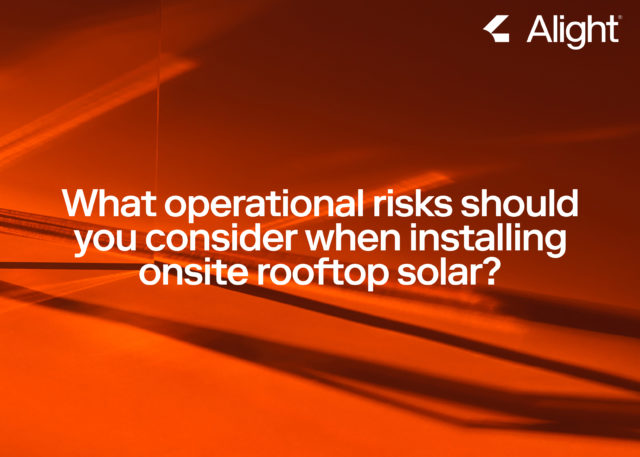Energy consumption analysis
Depending on the energy intensity of the customer and the size of the facility, customers will have different energy demands. Analyzing historical hourly energy consumption data will help the solar developer understand the customer’s energy needs, which can vary throughout the day, and help in sizing the solar system appropriately.
“You don’t need to design a system for 100% self-consumption; sometimes the business case is stronger at 80% or 90%, depending on the country’s electricity prices. Most often the system will be designed to optimize savings for the customer,” explains Stoltz.
Keep in mind that the offsetable cost of the electricity bought from the grid has a higher value than the overproduced energy that you would sell to the grid. That’s because when you buy electricity from the grid, you have not only the spot price, but grid fees, potential taxes and guarantees of origin fees. On the other hand, when you sell to the grid, you can only sell at the spot price. Thus onsite solar installations are carefully designed to meet as much of the consumption demand as possible without overproducing.
If the system produces more than the customer can consume, is there a business case to sell excess energy to the grid? “That largely depends on the country. In some countries, like in Spain, due to grid congestion it’s difficult to get the permit to export excess production, and the solar developer should aim to build a zero-export solution. In Sweden, on the other hand, it’s easier to sell excess electricity but the financial earnings can be small relative to the self-consumed energy,” Stoltz says.
System sizing
Based on the site assessment and the energy consumption analysis, plus budget considerations, it’s possible to calculate the optimal system size. The goal is to size the system to meet a significant portion of the facility’s energy demand while avoiding overproduction. Many solar developers will use solar modeling software to simulate solar system performance of different designs based on location, orientation, tilt, shading, and panel specifications. The resulting design is the one that delivers the best savings scenario.
Component selection
If the solar developer is working together with an EPC to build the installation, the component selection will often be done together to ensure they are compliant with local regulations, owner requirements and insurance requirements, and that they meet market standard efficiencies.
When selecting solar panels, it’s important to choose high-quality panels with a good balance of efficiency, durability, and cost. New developments in panel technology is also giving rise to low-carbon solar panels, which have a lower footprint than traditional panels. Alight is using such low-carbon solar panels at its solar park in Hultsfred. In addition to solar panels, inverters are central to any solar system. It’s critical to select inverters that match the system size and panel specifications.
Financial analysis
Before progressing any further, crunching the numbers is key to ensure the project will be financially viable for both the developer and the customer. This is done by calculating the costs (including solar panels, inverters, installation, permits, and other related expenses) and the expected savings over the system’s lifespan. It’s important to consider incentives, tax credits, and potential revenue from excess electricity fed back to the grid if applicable.
In most cases, solar developers will optimize the system for total savings rather than MWh cost. The goal is to have the best savings case possible over the PPA term, which can be anywhere from 10 to 25 years. Depending on the country, after the PPA term runs out, the customer can usually opt to buy out the solar installation at a very low cost, meaning that the subsequent costs would be limited to O&M and tax costs, increasing the savings significantly.
By partnering with an experienced solar developer, designing an onsite solar project can be a smooth process. The short timeline is one of the many reasons that energy-intensive companies now consider onsite solar a prerequisite for buying power from offsite projects. After all, you need to make use of your own space before turning to someone else’s.



